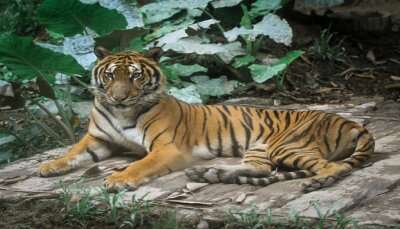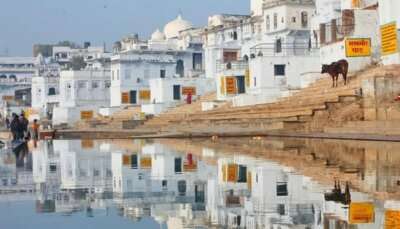A Complete Guide To Explore The Keibul Lamjao National Park In [Year]
![A Complete Guide To Explore The Keibul Lamjao National Park In [Year]](https://img.traveltriangle.com/blog/wp-content/uploads/2024/09/Keibul-Lamjao-National-Park.jpg)
The Keibul Lamjao National Park is a unique national park in Manipur, known for being the only floating national park. This park boasts tourists from the locality and from lands beyond who are captivated by the beauty of the place. Many photographers, nature lovers and bird watchers come here to witness the rich flora and fauna in the park. People can also enjoy boating and exploration apart from wildlife spotting. Thus, the park allows travellers a wholesome experience and makes the trip unforgettable. Keep reading our blog to learn more about the park and its flora and fauna.
About Keibul Lamjao National Park
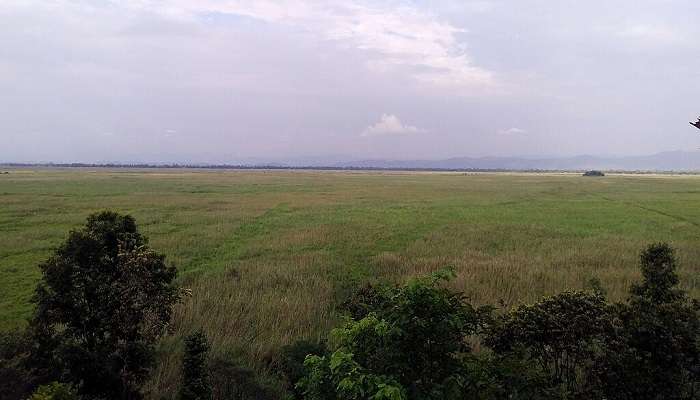
The Keibul Lamjao National Park is a floating national park, one of its kind, located southwest of the famous Loktak Lake in Manipur. This place remains bustling with tourists who come here for its rare and exquisite variety of deer, the Sangai or dancing deer. Many other migratory birds and animals like otters and hog deer are essential to the park here.
The park is currently on a tentative list of UNESCO World Heritage Sites and is documented as the Keibul Lamjao Conservation Area. It was first constructed in 1966 to conserve wildlife. At first, it was a habitat for the vulnerable species of Eld’s deer. Then, the park was expanded, and in 1977, it became a national park.
Also Read: Tourist Attractions In Manipur
Flora And Fauna At Keibul Lamjao National Park

The Keibul Lamjao National Park is chiefly covered with semi-evergreen forests. The flora here is mainly aquatic, with many reeds and grasses covering the swamps and dry lands. Dead vegetation floating on the lake’s surface also harbours plants growing atop it. Some examples of richly grown flora include Erianthus ravennae, or the elephant grass, Saccharum munja, Alpinia laughs, Saccharum procerus, and many other varieties.
The fauna at the National Park can be divided into two main categories: fauna and avifauna. Fauna includes mammals, fishes, and amphibians, while avifauna refers to birds. The mammals easily found here include hog deer, wild boar, and sambar. Common fishes include Channa Striata and Wallago Attu. Amphibians and reptiles include mostly tortoises and varieties of snakes. Meanwhile, the avifauna or the birds most commonly found here, are either migratory or reside in the national park. A lot of different birds can be seen here, including Indian pied myna, North Indian black drongos, Burmese Sarus crane, East Himalayan pied kingfisher and more.
Keibul Lamjao National Park Opening Hours and Entry Fees
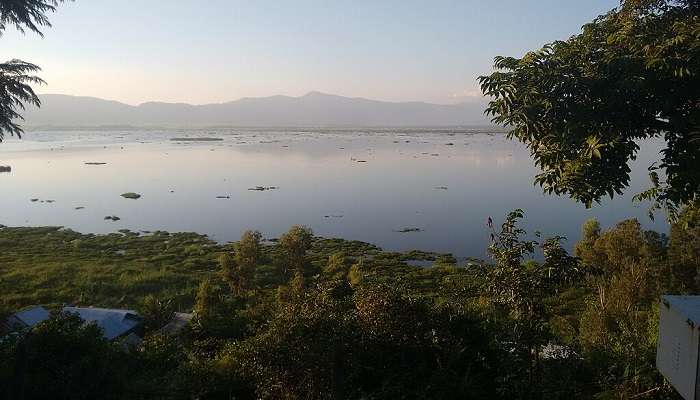
Keibul National Park is open from 6:30 a.m. to 5:00 p.m. every day. The morning hours are considered better for visiting if people are interested in watching the dancing deer. Further, the entry fee for adults is Rs. 50, while children have to pay a nominal price of Rs. 25.
People can get local guides to explain the various costs of other activities, if any.
Related Post: Manipur Festivals
Best Time To Visit Keibul Lamjao National Park
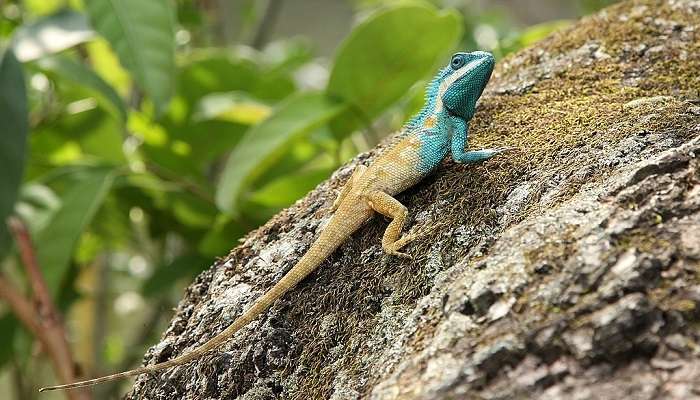
The perfect time to visit Keibul Lamjao National Park is during Manipur’s winter, which lasts between October and March.
The weather is pleasant during this time, and intensive travel is not difficult. Moreover, the Sangai deer, the park’s speciality, are also the most active during this time.
Ways To Reach
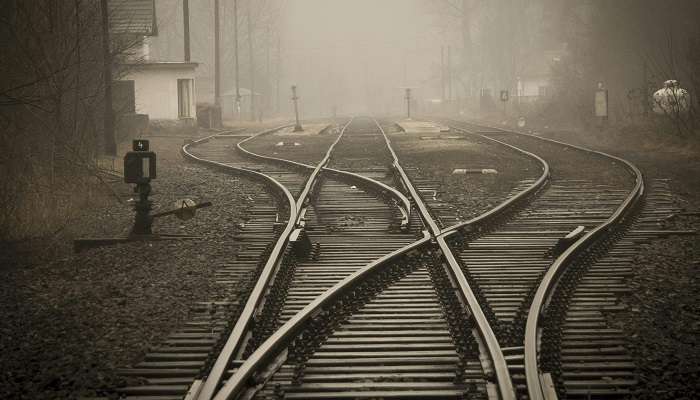
Here are some ways to reach Keibul Lamjao National Park:
By Air
People can board a flight to the nearest airport, Tulihal International Airport Imphal, which is about 30 km away from the District headquarters. Then, they can get on any public transport to reach the park.
By Rail
The closest railhead is the Jiribam Railway Station in Manipur. From there, people can book a train and then use local transport to reach the national park.
By Road
Road transport in the region is also quite convenient. People can use the well-connected roads to reach the national park with their vehicle or a pre-booked cab or bus.
Related Post: Shopping In Manipur
Things To Keep In Mind While Visiting The Keibul Lamjao National Park
While Keibul Lamjao National Park is a great place to discover the flora and fauna of Manipur, tourists are advised a few things to keep in mind to get the most out of their trip, such as:
1. Safety

The National Park features many wildlife and plants that are unknown to the general public. Hence, it is best not to touch plants without a firm idea about the species. In fact, people should also maintain a safe distance from the animals.
People are advised to carry safety equipment and wear life jackets for a better experience of activities such as boating. These preventive measures ensure the safety and security of the tourists, allowing for happy memories during the trip.
2. Carry Important Items
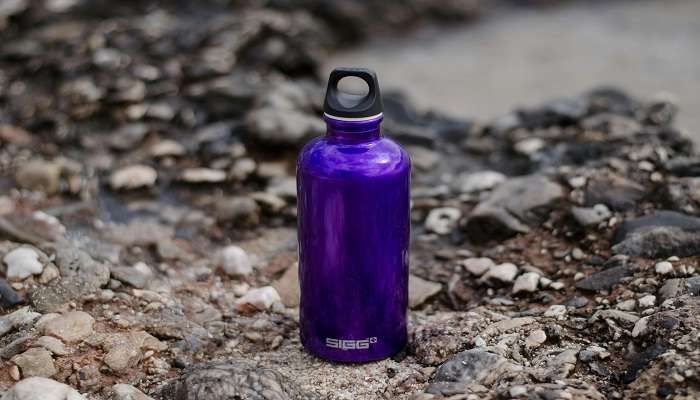
Tourists at Keibul Lamjao National Park are advised to carry items of basic necessity, such as water bottles and binoculars. They are also advised to wear comfortable clothes and proper shoes to travel around the place without much hassle.
In addition, the tourists can bring cameras to click beautiful photos of the wildlife in the region and capture sweet memories. They can also use binoculars to get a better look at the wildlife. Overall, it is better to go with guides who help to underline the important things and the basic park norms.
Related Post: Waterfalls In Manipur
3. Transportation and Food

Taking care of transportation and food are some of the most important things to do when visiting a place such as the Keibul National Park. In addition, people are advised to note all available places to eat near the park so the trip does not feel bland and tiring.
Further, pre-booked transportation saves a lot of time and confusion and allows people to explore without worrying about finding the right public transportation in the region. For people who are new to Manipur, this step is a must. Hence, transportation, accommodation, and food are extremely important things to take care of.
You May Also Like To Read: Places To Visit In Manipur
The Keibul Lamjao National Park offers a unique tourist experience. Its floating islands harbour exquisite animals like the Sangai deer, making it suitable for nature lovers and adventurists who want to witness the allure of gorgeous wildlife and also go boating. In short, the park provides a holistic experience to the tourists. So, if you, too, want to experience engaging with rich wildlife and witnessing lush green flora of the National Park, then book a trip to Manipur right away! Put on your most comfortable clothes and a traveller’s cap to embark on this wonderful journey to Manipur’s most celebrated park.
For our editorial codes of conduct and copyright disclaimer, please click here.
Cover Image Credit : Sathyakumar. k for Wikimedia Commons
Frequently Asked Questions About Keibul Lamjao National Park
What is Keibul Lamjao National Park famous for?
The Keibul National Park is well-known for being the natural habitat of the rare deer species, the Sangai or the dancing deer. In fact, the park also bears the flagship for being the first and only floating national park.
Is Keibul Lamjao National Park a Ramsar site?
Although the Keibul Lamjao National Park is not a Ramsar Site in its entirety, Loktak Lake, which covers its total area, is designated as a significant Ramsar site.
In which national park is the Sangai animal found in Manipur?
The Keibul Lamjao National Park in Manipur remains the only habitat of the Sangai deer or the dancing deer in the whole region. The deer is only found here, and the park bears a special status because of it.
Why is Keibul Lamjao declared a national park?
The national park was reestablished as a national park rather than a reserve or conservation park because of the necessity of deer conservation. A rare type of deer, the Eld,’s deer direly needed conservation, which necessitated this declaration.
What is the Speciality of Keibul Lamjao National Park?
The national park is considered special for many reasons, such as being a floating national park, one of a kind. In addition, this remains the natural habitat for Sangai deer and other rich biodiversity.
People Also Read:
Singalila National Park Manas National Park Jim Corbett National Park

With a passion for exploring and travelling to the roads long forgotten, experience the world through enthralling stories and adventures. Join me as I share my experiences at some of the world’s most popular tourist destinations and quench that pestering curiosity with something exciting!



